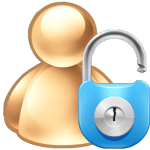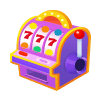Dosing & Administration
Generally, hypothyroidism may be effectively treated via a constant daily dose of levothyroxine, and, for the majority of confirmed aetiologies, this needs to be lifelong. However, in this setting, there appear to be many cases of both levothyroxine over- and under-dosing and it may be that frequent adjustments of a dose are necessary. These adjustments need to be handled with caution and take into account the many contributing factors, as multiple levothyroxine dose adjustments evidently result in a greater burden on healthcare resources 24. This means that it is necessary for clinicians to determine which patients are truly in need of dose adjustment. Even more importantly, accumulating evidence suggests that many patients, for whom the indication for levothyroxine initiation is not adequately established and the diagnosis is not well documented, are remaining on levothyroxine therapy for longer than necessary. A prospective clinical cohort follow-up study illustrated this by showing that, among 291 patients (84% females) on levothyroxine replacement therapy without a solid diagnosis of hypothyroidism and in whom the treatment was paused, 114 developed hypothyroidism, while 177 participants remained euthyroid.
- After more than 120 years since Murray first successfully treated hypothyroidism with sheep thyroid extract29 and numerous subsequent advances in the field, there remain many uncertainties surrounding the management of this common disease.
- Leonidas H. Duntas and Jacqueline Jonklaas have nothing to disclose related to this work.
- Certain other medicines may also increase or decrease the effects of Synthroid.
- When prescribing SYNTHROID, protecting your script can ensure your patients receive SYNTHROID every time they refill their prescription.
- Calcium supplements 74, 75 and iron 76, 77 also reduce absorption and thereby increase the levothyroxine dose requirement or increase serum TSH 52, 53.
Patient resources
The latter results clearly point to a significant overuse of levothyroxine therapy 25. Thyroxine is secreted by the thyrocytes and is the main thyroid hormone in the circulation. Thyroxine is actively transported to the various organs where it is converted to triiodothyronine by the activity of the deiodinases 6. Triiodothyronine, the active form of thyroid hormone, is secreted in small amounts by the thyroid but is mainly generated via extrathyroidal conversion of the prohormone thyroxine. Hypothyroidism is a common endocrine disease that requires timely and lifelong treatment since, if left untreated, it can contribute to hypertension, dyslipidaemia, and heart failure and induce reversible dementia and infertility, as well as neurosensory, musculoskeletal, and gastrointestinal symptoms 7. There is currently no other treatment for hypothyroidism, other than providing thyroid hormone replacement.
precise dosing options2
So, getting the patients on the right dose, but maintaining them on the right dose, is also very important. The peak therapeutic effect of a given dose of SYNTHROID may not be attained for 4 to 6 weeks. Evaluate the need for dosage adjustments when regularly administering within one hour of certain foods that may affect SYNTHROID absorption. Some of studies cited include analyses, or studies with human participants, performed by the authors and completed prior to the initiation of this manuscript. TSH lower limit of quantification was 0.2 mIU/L and upper limit of normal was 5.6 mIU/L, as indicated by the shaded area.
Clinical Practice Guideline for the Diagnosis and Management of Thyroid Nodules
Due to its long half-life of about 7days, in patients in the clinically euthyroid state, levothyroxine is the preferred first-line treatment for primary hypothyroidism and has been the most commonly prescribed treatment since the 1980s 8. When signs and symptoms raise the index of suspicion, the clinician should obtain a serum TSH level (Figure 12,5–7,15–17). If the TSH level is within the normal reference range, other etiologies for the signs and symptoms that prompted testing should be sought (Table 41,2). If the FT4 level is normal, further thyroid or pituitary evaluation is unnecessary. Several medications, supplements, and food can interfere with the absorption and action of levothyroxine (Table 2).
Thyroid
- Thyroxine is secreted by the thyrocytes and is the main thyroid hormone in the circulation.
- Generally, both a TSH-based estimate and a body weight-based estimate yield similar initial estimates of dose requirement (Fig. 1).
- If levothyroxine is ingested along with food, its absorption can be impaired 15, 51.
- That’s because substitutions can be made at the pharmacy if the prescription is not properly protected with the Dispense as Written (DAW) state-specific language.
- What are the long-term outcomes of different target TSH levels on levothyroxine replacement?
I go over with them the fact that they should check the label at the pharmacy, on the bottle, to make sure it says brand-name SYNTHROID and not generic levothyroxine. And in many cases, to also pop the top off the bottle while they are at the pharmacy counter and look at the pills and make sure they have SYNTHROID embossed on those tablets. So, it’s not just treating a number and following the TSH, it’s also making sure that the patient’s symptoms have improved.
In adult patients with primary hypothyroidism, monitor serum TSH levels after an interval of 6 to 8 weeks after any change in dosage. In patients on a stable and appropriate replacement dosage, evaluate clinical and biochemical response every 6 to 12 months and whenever there is a change in the patient’s clinical status. The recommended starting daily dosage of SYNTHROID in pediatric patients with primary, secondary, or tertiary hypothyroidism is based on body weight and changes with age as described in Table 2. Titrate the dosage (every 2 weeks) as needed based on serum TSH or free-T4 until the patient is euthyroid. Diligent monitoring of patients taking levothyroxine and regular dose adjustment to achieve optimised treatment and avoidance of adverse events are particularly emphasised. The levothyroxine dose requirement gradually decreases with age,82,83 thought to be due to age-related decreases in thyroxine degradation84 and in lean body mass.85 Furthermore, levothyroxine replacement may precipitate severe angina or myocardial infarction in an elderly person with asymptomatic ischemic heart disease.
Armour Thyroid
The signs and symptoms that suggest thyroid dysfunction are nonspecific and nondiagnostic, especially early in disease presentation; therefore, a diagnosis is based on blood levels of thyroid-stimulating hormone and free thyroxine. Symptom relief and normalized thyroid-stimulating hormone levels are achieved with levothyroxine replacement therapy, started at 1.5 to 1.8 mcg per kg per day. Adding triiodothyronine is not recommended, even in patients with persistent symptoms and normal levels of thyroid-stimulating hormone. Patients older than 60 years or with known or suspected ischemic heart disease should start at a lower dosage of levothyroxine (12.5 to 50 mcg per day).
Soy-containing foods are an example of a substance that can decrease absorption (Fig. 6) 73. Calcium supplements 74, 75 and iron 76, 77 also reduce absorption and thereby increase the levothyroxine dose requirement or increase serum TSH 52, 53. Vitamin C stands alone as an example of a supplement that may actually decrease the requirement for levothyroxine by enhancing its absorption, at least in patients with gastritis 78.
Together, these hormones regulate the secretion of TSH from the anterior lobe of the pituitary gland. This functioning feedback loop keeps the blood level of the thyroid hormone normal. Once the patient and I have decided that thyroid hormone replacement is necessary, we go over the specific reasons for choosing and writing Synthroid as that replacement therapy. I review with the patients the important issues about how to take the medication, as consistency is really the key message. I talk about the fact that it’s important to take the medication in the same timing and pattern each day, take it on an empty stomach minutes before they eat. Dosing must be individualized based on your patient’s age, weight, cardiovascular status, concomitant medical conditions (including pregnancy), concomitant medications, co-administered food, and the specific etiology of the condition being treated.2 See full prescribing information for dosing in specific patient populations.
If so, advise them to stop biotin supplementation at least 2 days before assessing TSH and/or T4 levels. SYNTHROID is not indicated for treatment of hypothyroidism during the recovery phase of subacute thyroiditis. SYNTHROID is not indicated for suppression of benign thyroid nodules and nontoxic diffuse goiter in iodine-sufficient patients, as there are no clinical benefits and overtreatment with SYNTHROID may induce hyperthyroidism. Use the drop-down menu below to select your state and see the specific language required to prevent generic substitution. There are certain foods that can interfere with the way SYNTHROID works, particularly we think about cat synthroid high-fiber foods that can interact with the absorption of thyroid medications.























